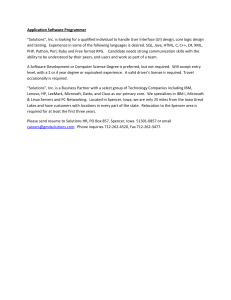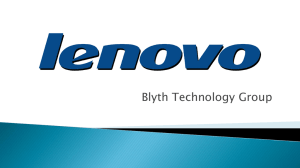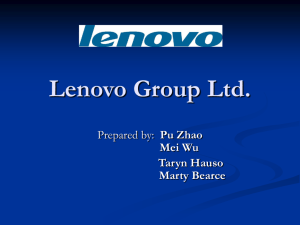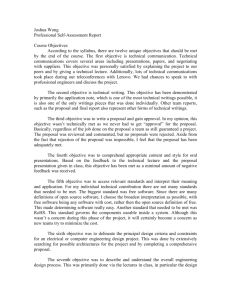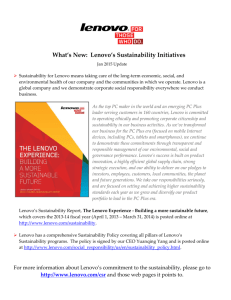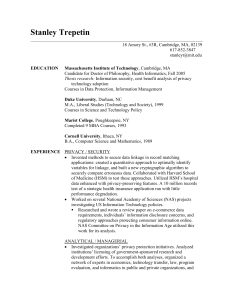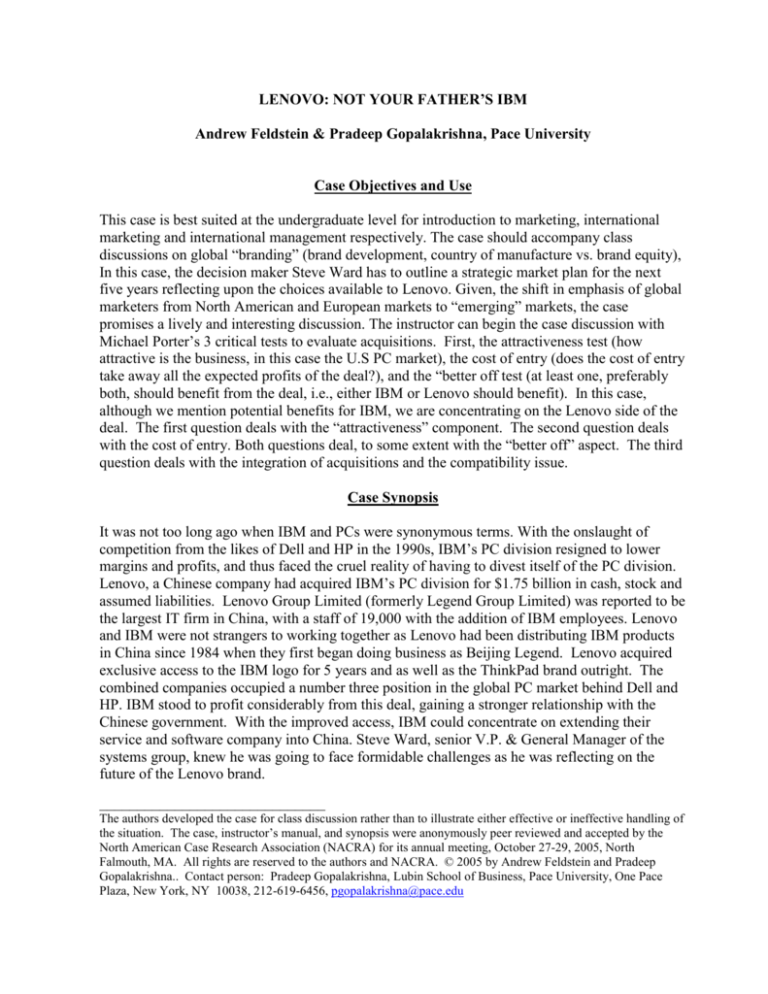
LENOVO: NOT YOUR FATHER’S IBM
Andrew Feldstein & Pradeep Gopalakrishna, Pace University
Case Objectives and Use
This case is best suited at the undergraduate level for introduction to marketing, international
marketing and international management respectively. The case should accompany class
discussions on global “branding” (brand development, country of manufacture vs. brand equity),
In this case, the decision maker Steve Ward has to outline a strategic market plan for the next
five years reflecting upon the choices available to Lenovo. Given, the shift in emphasis of global
marketers from North American and European markets to “emerging” markets, the case
promises a lively and interesting discussion. The instructor can begin the case discussion with
Michael Porter’s 3 critical tests to evaluate acquisitions. First, the attractiveness test (how
attractive is the business, in this case the U.S PC market), the cost of entry (does the cost of entry
take away all the expected profits of the deal?), and the “better off test (at least one, preferably
both, should benefit from the deal, i.e., either IBM or Lenovo should benefit). In this case,
although we mention potential benefits for IBM, we are concentrating on the Lenovo side of the
deal. The first question deals with the “attractiveness” component. The second question deals
with the cost of entry. Both questions deal, to some extent with the “better off” aspect. The third
question deals with the integration of acquisitions and the compatibility issue.
Case Synopsis
It was not too long ago when IBM and PCs were synonymous terms. With the onslaught of
competition from the likes of Dell and HP in the 1990s, IBM’s PC division resigned to lower
margins and profits, and thus faced the cruel reality of having to divest itself of the PC division.
Lenovo, a Chinese company had acquired IBM’s PC division for $1.75 billion in cash, stock and
assumed liabilities. Lenovo Group Limited (formerly Legend Group Limited) was reported to be
the largest IT firm in China, with a staff of 19,000 with the addition of IBM employees. Lenovo
and IBM were not strangers to working together as Lenovo had been distributing IBM products
in China since 1984 when they first began doing business as Beijing Legend. Lenovo acquired
exclusive access to the IBM logo for 5 years and as well as the ThinkPad brand outright. The
combined companies occupied a number three position in the global PC market behind Dell and
HP. IBM stood to profit considerably from this deal, gaining a stronger relationship with the
Chinese government. With the improved access, IBM could concentrate on extending their
service and software company into China. Steve Ward, senior V.P. & General Manager of the
systems group, knew he was going to face formidable challenges as he was reflecting on the
future of the Lenovo brand.
______________________________
The authors developed the case for class discussion rather than to illustrate either effective or ineffective handling of
the situation. The case, instructor’s manual, and synopsis were anonymously peer reviewed and accepted by the
North American Case Research Association (NACRA) for its annual meeting, October 27-29, 2005, North
Falmouth, MA. All rights are reserved to the authors and NACRA. © 2005 by Andrew Feldstein and Pradeep
Gopalakrishna.. Contact person: Pradeep Gopalakrishna, Lubin School of Business, Pace University, One Pace
Plaza, New York, NY 10038, 212-619-6456, pgopalakrishna@pace.edu


